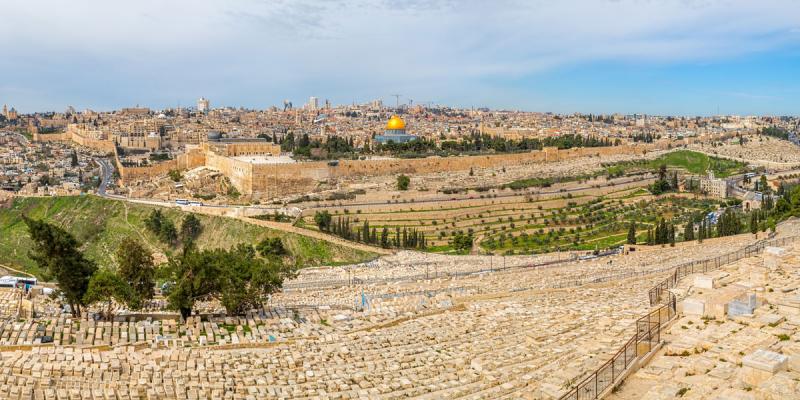You are here
Book of Mormon Central is in the process of migrating to our new Scripture Central website.
We ask for your patience during this transition. Over the coming weeks, all pages of bookofmormoncentral.org will be redirected to their corresponding page on scripturecentral.org, resulting in minimal disruption.
The phrase “land of Jerusalem” is a common phrase in the Book of Mormon and is used by its writers to refer to the place of their original inheritance before their journey to a new land of promise (1 Nephi 2:11; 7:2; 7:7; 16:35; 17:20; 2 Nephi 1:1). Some readers have thought, since Jerusalem was a city, that the phrase “land of Jerusalem” is anachronistic.1 Although this phrase is not found in the Bible, it does appear in other ancient texts discovered after the publication of the Book of Mormon. For example, it is used several times in the Amarna Letters, which date to the fourteenth century BC:
Behold this land of Jerusalem . . .
[If] they send into the land [of Jerusalem] troops, let them come with an Egyptian officer.
Let my king requisition for them much grain, much oil, (and) much clothing, until Pawure, the royal commissioner, comes up to the land of Jerusalem.
Behold, the king has set his name in the land of Jerusalem for ever; so he cannot abandon the lands of Jerusalem!
And now as for Jerusalem—Behold this land belongs to the king.
But now even a town of the land of Jerusalem, Bit-Lahmi by name, a town belonging to the king, has gone over to the side of the people of Keilah.2
The Amarna Letters were not discovered until 1887, some fifty-seven years after the publication of the Book of Mormon.
The phrase “land of Jerusalem” has also more recently turned up in a fragment from the Dead Sea Scrolls attributed to the prophet Jeremiah, who lived at the same time as Lehi and Nephi:
[…and] Jeremiah the prophet [went] from before YHWH, [… the] exiles who were brought into exile from the land of Jerusalem and were led […] king of Babel, when Nabuzaradan, chief of the escort, struck […] … and he took the vessels of the temple of God, the priests [… and] the children of Israel and led them to Babylon. (4Q385a)3
In another fragment from the Dead Sea Scrolls, also related to Jeremiah (4Q389), a scholar restored the phrase “in the land of J[erusalem …]” to a fragmented line.4 These ancient sources show that the “land of Jerusalem,” although once considered an anachronism, is actually evidence of the historical authenticity of Nephi’s account.
- 1. “‘The land of Jerusalem.’ . . . There is no such land. No part of Palestine bears the name of Jerusalem, except the city itself.” Origin Bacheler, Mormonism Exposed Internally and Externally (1838), 14.
- 2. W. F. Albright, trans., “The Amarna Letters,” in The Ancient Near East: An Anthology of Texts and Pictures, ed. James B. Pritchard (Princeton, NJ: Princeton University Press, 2011), 437–440; emphasis added.
- 3. Florentino Garcia Martinez and Eibert J. C. Tigchelaar, eds., The Dead Sea Scrolls: Study Edition, 2 vols. (New York, NY: Brill, 1999), 2:773. See also, Donald W. Parry and Emanuel Tov, The Dead Sea Scrolls Reader, 6 vols., 2nd ed. (Boston, MA: Brill, 2013), 2:803.
- 4. Kipp Davis, The Cave 4 Apocryphon of Jeremiah and the Qumran Jeremianic Traditions: Prophetic Persona and the Construction of Community Identity (Boston, MA: Brill, 2014), 143.
Further Reading
Neal Rappleye, “Apocryphon of Jeremiah (4Q385a),” Nephite History in Context 2 (December 2017): 1–5.
Neal Rappleye, "Letters of ʿAbdu-Ḫeba (EA 285–290),” Nephite History in Context 2 (December 2017): 6–13.
Hugh Nibley, Lehi in the Desert/The World of the Jaredites/There Were Jaredites (Salt Lake City and Provo, UT: FARMS and Deseret Book, 1988), 6–7.
Robert F. Smith, “The Land of Jerusalem: The Place of Jesus’ Birth,” in Reexploring the Book of Mormon: A Decade of New Research, ed. John W. Welch (Salt Lake City and Provo, UT: FARMS and Deseret Book, 1992), 170–172.
Gordon C. Thomasson, “Revisiting the Land of Jerusalem,” in Pressing Forward with the Book of Mormon: The FARMS Updates of the 1990s, ed. John W. Welch and Melvin J. Thorne (Provo, UT: FARMS, 1999), 139–141.




